03 April 2015
Trackers mark footprints with GPS technology as 2,000 people scour the forests in first count of rare big cat in 10 years.
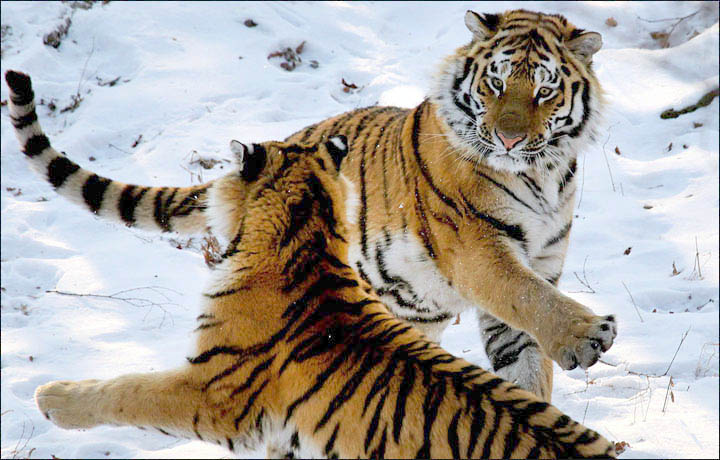
The census has come at a particularly important time, following one
of the worst winters in the region for decades. Picture: Yodnews
A large-scale census has taken place to estimate how many tigers are living in the Far East.It is the first time in 10 years that such research has been carried out, and was organised by animal charity WWF, the Ministry of Natural Resources and the Amur Tiger organisation.
Searching for footprints in the snow, a team of about 2,000 people walked a total of 15,000km and covered a massive 150,000 sq km area.
Hi-tech GPS equipment was used to mark the exact spot where the tiger was found, and measurements were taken of the imprint to work out its size, whether it was male or female, and in which direction it was travelling.
The census has come at a particularly important time, following one of the worst winters in the region for decades. Two months-worth of snow fell during the month of December alone, leaving depths of up to one metre in places, a critical level for many animals.
Conservationists were concerned about the rare Amur tiger, which had been badly affected in similar weather conditions in the 1980s with 30 of them dying.
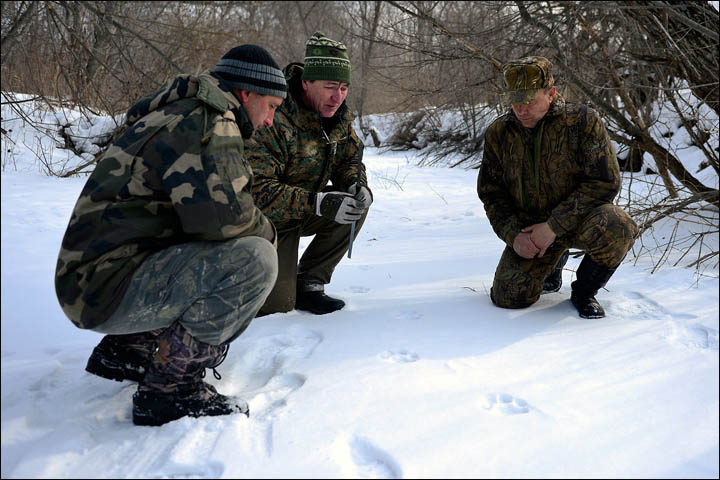

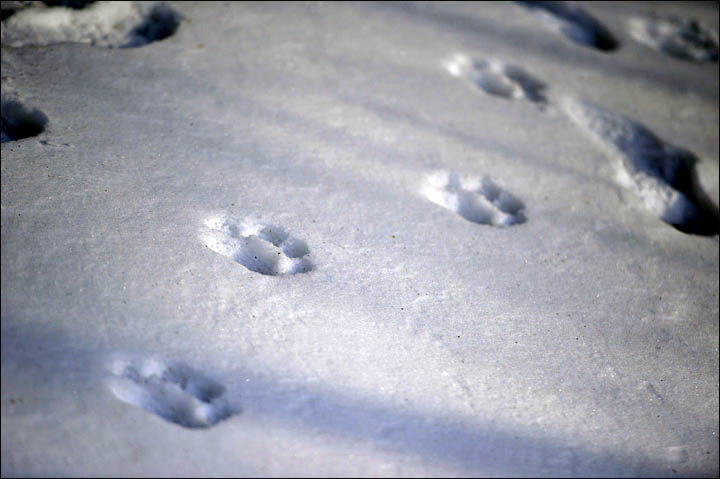
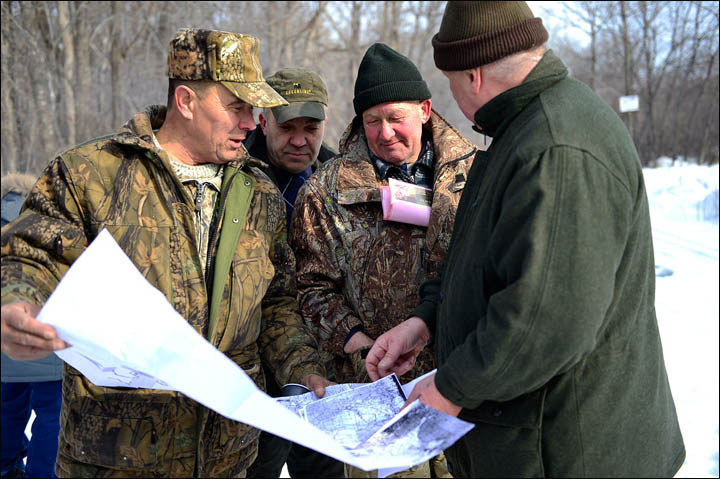
Measurements were taken of the imprint to work out its size, whether
it was male or female, and in which direction it was travelling.
Pictures: Yuri Smityuk / WWF Russia
More commonly known as the Siberian tiger, the Amur tiger is listed
as an endangered species, with less than 450 of them left in the region.
Five years ago Russia launched a national strategy to protect the
animal, which is the largest of the five tiger species.The census started on January 31 with the reporting team walking through deep snow amid temperatures of -30C.
The snowfall was vital and numerators have to wait at least five days after the last covering to start their work. It is also crucial that it does not snow again in the three days after the survey has started otherwise the team would have to check all footprints again.
Those counting the numbers of tigers do not go armed and they tend to walk routes along rivers where the big cats like to rest. At times the team requires special ski shoes to walk.
Any time a footprint is spotted it is marked via GPS navigator, then measured. Less than 8cm in size it belongs to a cub, up to 10cm and it has been made by a female, and if it is over 10cm it is from a male tiger.
The information is noted down in a diary and then later compiled into a data base. Naturally it is entirely possible that the same tiger will be counted twice and it is thought that as much as a fifth of the population has yet to be traced and recorded.
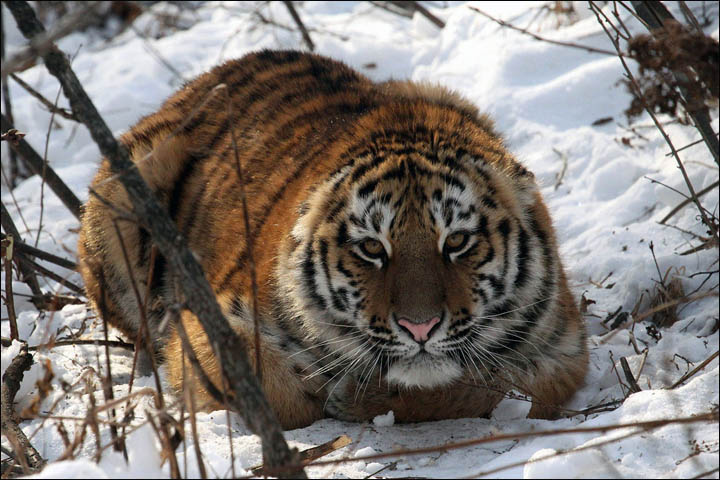
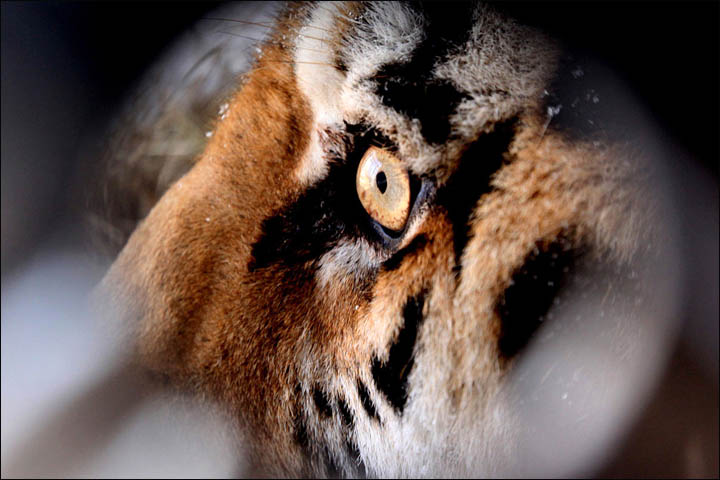
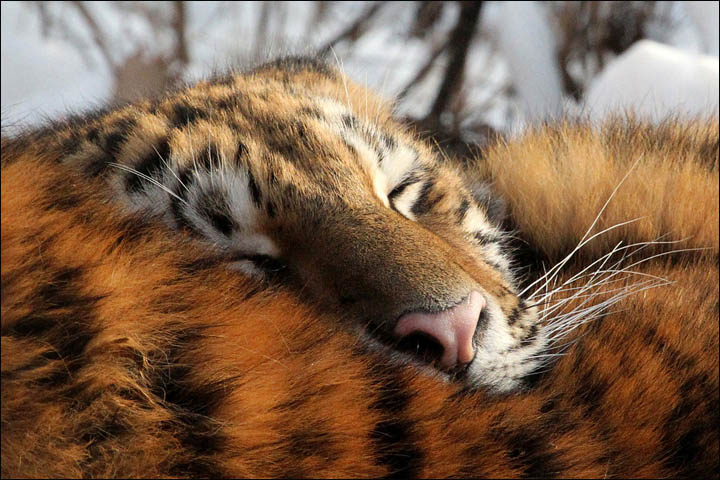
'It must be pleasing to see them on the TV screen but when a tiger is
steps away, there is no time for sentiment.' Pictures: Yodnews
Pavel Fomenko, the Amur region coordinator for WWF, said that taking
the census was an important and enjoyable experience - but stressed that
it was dangerousHe said: 'It's a serious animal. It must be pleasing to see them on the TV screen but when a tiger is steps away, there is no time for sentiment. We encourage hunters to join us. They already have the skills necessary for our job. A hunter is a pathfinder. It's a separate science you need to study.
'A tiger is a very smart animal: they feel and understand everything. If a tiger wants to eat you, he'll do so. They don't forgive mistakes.'
Among the tigers living in the Far East are three released by President Vladimir Putin in May last year.
Satellite signals beamed to Moscow from collar trackers has been showing the movements of Kuzya, Borya and Ilona and where they have preferred to spend their time.
Putin, an avid campaigner to save the species, was also recently behind the unveiling of a computer animated tiger cub as a new character on Russia’s longest-running children's TV show.
Information from the survey will be released by May, and the government and associated agencies will give recommendations on how to support the tiger population.
source
No comments:
Post a Comment